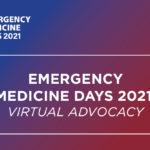“Getting to Zero” with Collective Medical’s Care Collaboration Platform
When the medical community discusses workplace violence, it often focuses on preventing harm or eradicating the issue entirely. But in the meantime, individuals who have already been victimized and remain at-risk on the frontlines of healthcare around the country need help.
Modern Healthcare recently published an article by Dr. Marie Vrablik, MCR. Dr. Vrablik shared the results of her recent study with her team at the University of Washington on successful coping strategies for physicians, nurses, and other healthcare providers who have been the victims of workplace violence. Through her research, Dr. Vrablik discovered several actionable ways organizations can support their staff to mitigate the long-term effects of violence.
Many of the healthcare workers who participated in the study reported feeling like workplace violence is inevitable and unpreventable, and Dr. Vrablik’s work shows this outlook can cause deep and lasting effects—especially burnout. If burnout is left unaddressed, it decreases both physical and emotional health, leading to increases in errors and staff turnover.
The healthcare community shouldn’t have to endure violence in healthcare settings. With better access to patient histories and consistent documentation of behavior patterns, the healthcare community will further achieve the ultimate goal of “Getting to Zero.” The study concluded that a care collaboration tool would provide the consistent documentation needed, with data analytics, to accurately predict and ultimately prevent potentially violent encounters.
Collective Medical’s collaboration platform allows providers to document incidents of violence—including physical, verbal, and sexual assault, theft, self-harm, and infectious diseases—then flags them for future encounters. When a patient with a history of violence returns to the hospital or presents at any point of care, Collective immediately pushes a notification to hospital and security staff, giving them the opportunity to prevent another incident.
Hospitals around the country are using Collective to protect hospital staff and other patients. For example, according to an article by Health IT Analytics, CHI St. Anthony in Pendleton, Oregon used the platform to increase its WPV reporting rates by 20 percent. This increase qualified St. Anthony for additional funding to establish an in-house security team, ultimately increasing workplace safety by reducing response times—or in many cases preventing incidents altogether.
For more information about how Collective Medical provides a proactive approach to workplace safety, visit: www.collectivemedical.com/workplace-safety ■
This article is part of the following sections:
Samantha manages fcep.org and publishes all content. Some articles may not be written by her. If you have questions about authorship or find an error, please email her directly.







